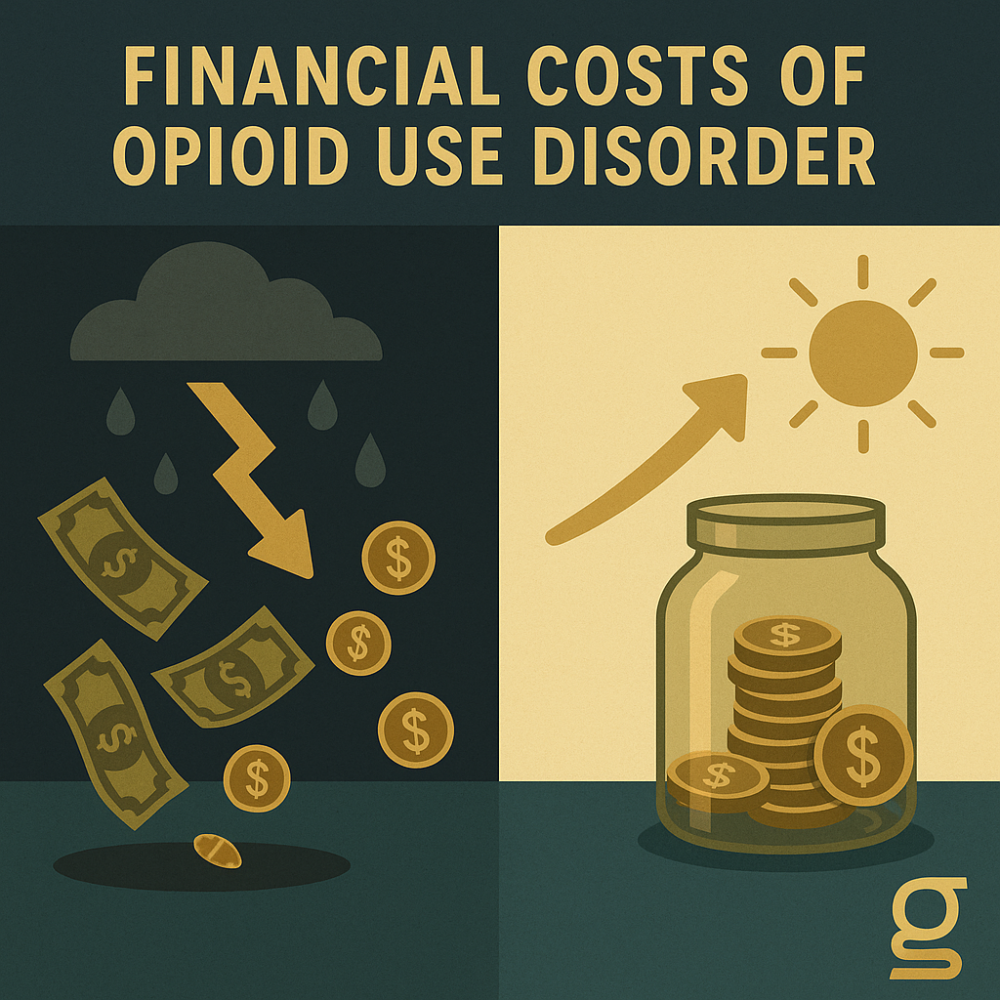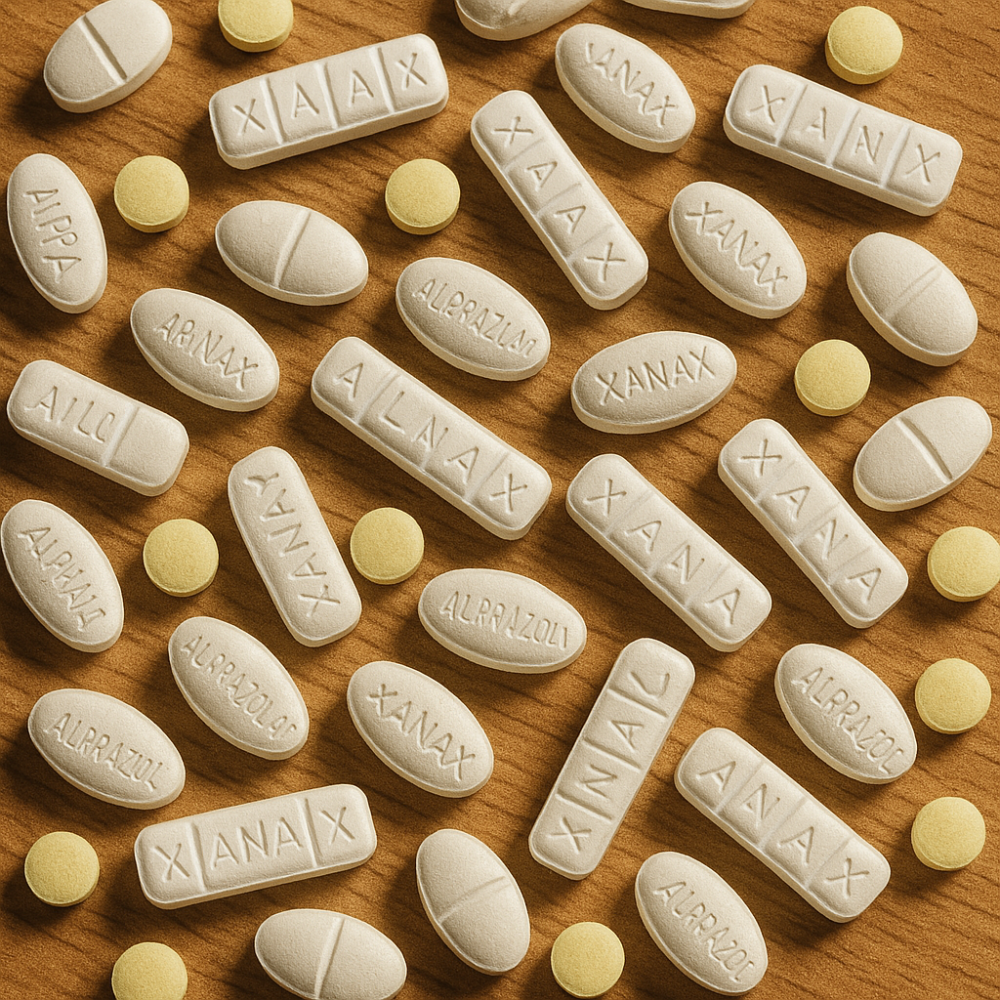Fentanyl is a synthetic opioid about 50 times more potent than heroin and 50 to 100 times stronger than morphine. While doctors can legally prescribe fentanyl to treat severe pain, prescription drugs are often diverted for recreational use. In some cases, fentanyl is made illegally and sold on the streets.
Opioid use disorder (OUD) is the clinical diagnosis for a person who continues to use fentanyl or another opioid despite negative personal, social, or professional consequences. More than two million Americans and over sixteen million people globally struggle with an opioid use disorder.
In 2020, more than 56,000 Americans died from synthetic opioid overdoses, according to U.S. government statistics1. Statistics show that fentanyl is linked to the highest number of opioid-related deaths.
What is Fentanyl?
Fentanyl is in a class of natural and synthetic drugs known as opioids. Other opioids include heroin, morphine, codeine, methadone, hydrocodone, and oxycodone.
While opioids like morphine and codeine are derived naturally from the opium poppy plant, fentanyl is manufactured in a lab, making it a synthetic opioid. Despite this difference, natural opioids and synthetic opioids have the same chemical structure.
Doctors prescribe pharmaceutical-grade fentanyl to treat patients with advanced-stage cancer pain, post-surgical pain, and, in some cases, patients with chronic pain who cannot tolerate hydrocodone, oxycontin, or other opioid pain relievers.
Forms of prescribed fentanyl include injections, skin patches, or lozenges.
Fentanyl is effective if used as prescribed, but even pharmaceutical-grade fentanyl can be fatal if misused. Unfortunately, illegal fentanyl has become popular for recreational use due to its powerful effects. Fentanyl sold on the illegal drug market causes more drug overdose deaths in the U.S. than any other drug.
Manufacturers of illegal fentanyl often mix the drug with other psychoactive drugs like cocaine, heroin, methamphetamine, and MDMA (ecstasy), making the product more potent, more addictive, and more deadly. A person buying street fentanyl does not know what the drug contains, which increases their risk of overdose.
Recreational users often buy street fentanyl as a nasal spray, eye drops, powder, spiked on paper, or pill form.
Not all fentanyl used recreationally is made in illegal labs. Pharmaceutical-grade fentanyl has a high diversion rate, meaning people with access to prescription opioids are moving this type of fentanyl into the illegal drug market, as well.
Fentanyl Side Effects
While most of those buying and using fentanyl illegally seek its psychoactive effects, including euphoria or pain relief, the drug may also deliver undesirable effects.
The Drug Enforcement Administration’s fentanyl fact sheet says common side effects of fentanyl may include:
- Euphoria
- Relaxation
- Pain relief
- Sedation
- Confusion
- Drowsiness
- Dizziness
- Nausea, vomiting
- Urinary retention
- Pupillary constriction
- Respiratory depression
Chronic constipation is another common complaint from those taking opioid pain medications. Harvard health statistics find that about 94 percent of cancer patients taking opioids for pain and 41 percent of patients taking opioids for non-cancer pain experience constipation.
How Fentanyl Affects the Brain
Like other opioid drugs, chemical compounds in fentanyl attach to opioid receptors in the brain that regulate emotions and pain. When triggered, opioid receptors block pain signals and deliver feelings of intense pleasure.
When an individual takes fentanyl or any addictive substance regularly, the brain adapts to its presence and demands increasingly higher doses to deliver the desired effect. This effect is called tolerance and is the first step towards dependence and addiction.
Once the body and brain reach the stage of requiring opioid use regularly, the user may be unable to feel pleasure or even a sense of normalcy without the drug. If a person stops using the addictive substance at this stage, they will experience withdrawal symptoms, some of which can be deadly.
Withdrawal is one reason that it is dangerous to stop or reduce opioid use abruptly. The Food and Drug Administration (FDA) warns that serious symptoms like severe pain, mental distress, and suicidal thoughts and actions can result from a discontinuation or rapid decrease in the dose. Medical supervision is critical to ensure the user’s safety and help manage their discomfort.
Signs of Fentanyl-Based Opioid Use Disorder
Because fentanyl is so potent, it does not take long to become physically and psychologically addicted to the drug. The current edition of the Diagnostic and Statistical Manual of Mental Disorders (DSM-5) provides physician guidelines for diagnosing fentanyl-based or other opioid use disorders (OUDs). According to DSM-5 guidelines, OUD is “a problematic pattern of opioid use leading to clinically significant impairment or distress.”
Patients who have at least two of the following symptoms within twelve months may have an OUD:
- Individuals take more opioids than they need or want or take them for longer than desired
- Individuals try to lessen their opioid use unsuccessfully
- Individuals spend much of their time trying to locate more opioids
- Cravings for opioids are frequent
- Individuals struggle with work and family commitments, as well as interpersonal relationships
- Despite personal and professional challenges, individuals continue taking opioids
- Individuals stop engaging in other activities to take more opioids
- Opioid use leads to risky behavior, like driving under the influence
- Individuals continue their opioid use even though they are aware of the harm the drug is causing
- Individuals experience tolerance
- Individuals experience withdrawal symptoms when they stop using opioids
Signs of a Fentanyl Overdose
Thousands of people worldwide die from a fentanyl overdose. Signs of opioid overdose may include:
- Slow, shallow breathing
- Small, constricted “pinpoint pupils”
- Falling asleep or loss of consciousness
- Choking or gurgling sounds
- Limp body
- Pale, blue, or cold skin
An overdose may cause breathing to slow or stop, causing hypoxia or insufficient oxygen in body tissues to sustain bodily functions. Hypoxia can quickly cause significant organ damage and may lead to a coma or permanent brain damage.
An overdose is a life-threatening medical emergency, but rapid intervention may save the person’s life. Naloxone is an FDA-approved medication that can reverse the overdose if administered quickly.
Many U.S. states allow private citizens to purchase naloxone in the nasal spray form called Narcan. All 50 states protect a person who administers naloxone “in good faith” from civil or criminal liability. It can take more than one dose to reverse a fentanyl overdose.
Addiction Treatment and Recovery
Substance use disorders can involve dependence on legal or illegal drugs or alcohol. It is common for a person to be dependent on one or more substances simultaneously. For those diagnosed with more than one disorder, known as dual diagnosis or co-occurring disorder, treatment must address them all for the best results.
It is critical for those struggling with a fentanyl-based use disorder or another substance use disorder to understand that these disorders are highly treatable.
Recovery from fentanyl-based use disorder begins with detoxification, known as detox. Detox is a medically supervised process to wean the patient from fentanyl safely. Careful supervision of the patient’s vital signs and administration of approved medications ensure that the patient is safe and as comfortable as possible during withdrawal. At Gallus Medical Detox, we specialize in safely helping patients through the detoxification process.
What is the Gallus Method of Opioid Detox?
We’re proud to offer our renowned detox program, the Gallus Method, to opioid use disorder patients. Our compassionate team at Gallus delivers outstanding clinical expertise using evidence-based medical protocols to support each patient comfortably through the withdrawal process. Our top priority is each patient’s care, dignity, and comfort at all times.
Fear of withdrawal symptoms is the number one reason those with opioid use disorders do not seek treatment. Our protocol reduces those symptoms by 40 percent, making the experience much more tolerable. As Darwin, a valued Gallus patient alumnus, says, “Thank you for making this process gentle and easy.”
If you have an opioid use disorder, do not let shame or fear of withdrawal stop you from achieving the quality of life you deserve. Trust Gallus to guide you safely through opiate detoxification to get you on your road to long-term recovery.


 Steve B
Steve B 

 Casey Wilson
Casey Wilson